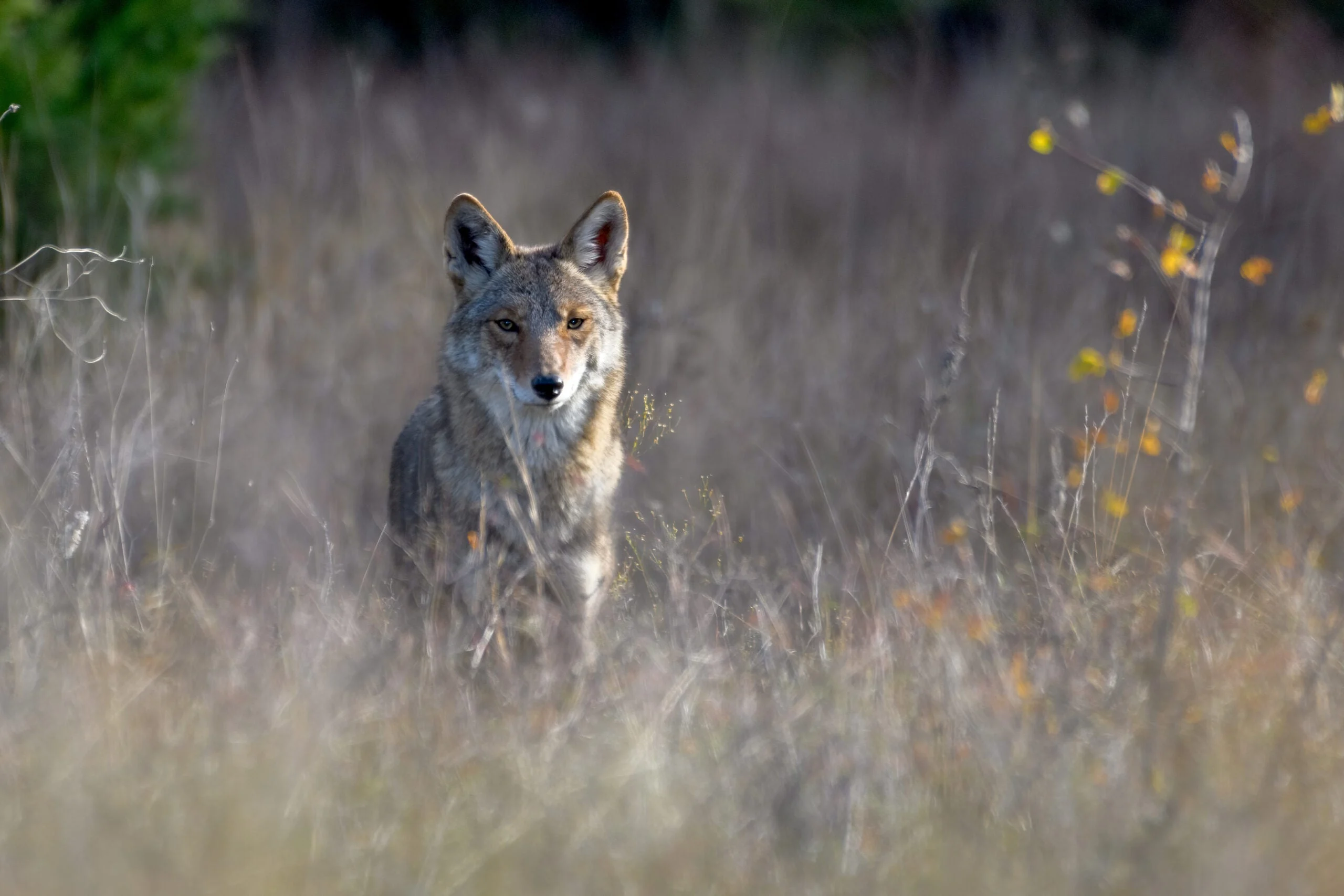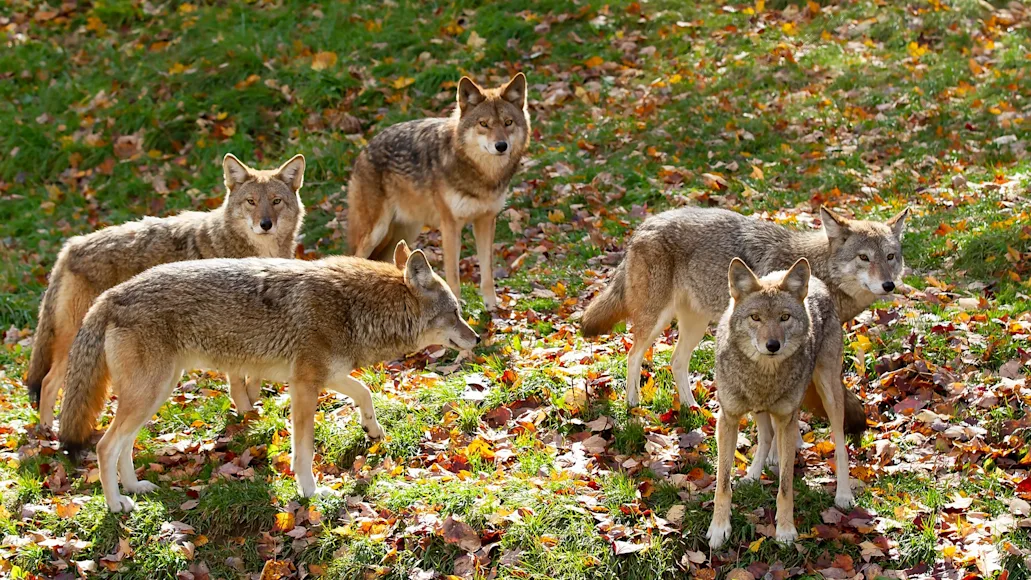When referencing coyotes, the answer isn’t as simple. Yes, a group of ‘yotes is also called a “pack,” but their hunting methods are far less black-and-white than their family group’s nomenclature. So, do coyotes hunt in packs? The answer is yes and no. Only on the rarest occasions have they been observed using wolf-like tactics with several pack members cooperating in unison. In more cases than not, coyotes hunt solo, but will also commonly hunt in pairs. These canines are skilled hunters that have adapted to almost any environment and condition. Chuck Jones didn’t name his famous character “Wile. E.” for nothing.
Do coyotes hunt in packs? The longer version of the answer is more nuanced. A pack of blood-crazed, wild dogs hunting as a unit is not necessary when field mice are on the menu. Strength and overwhelming numbers are not needed when chasing the local neighborhood bunny rabbit. However, in the rare cases when coyotes are hunting animals larger than themselves, pack tactics have been occasionally observed.
Coyote History and Distribution

Forty-nine U.S. states house a breeding population of coyotes, with Hawaii being the only exception. Adobe Stock / jwjarrett
In the old days, Canis latrans were only found west of the Mississippi River. In the modern day, a multitude of theories abound as to why this line of demarcation fizzled. The most prominent belief is that the extirpation of larger predators, such as wolves and cougars, in the eastern states in the late 1800s and early 1900s created an ecological void that coyotes filled. Other theories suggest that eastward movement was made possible by the development of bridges over the Mighty Mississippi or a series of river freezes
in the late 19th and early 20th centuries.
While nobody knows exactly how yodel dogs first crossed the Great River, equally few could question their prominence in the 21st century. Coyotes are now found in almost every corner of North America. Forty-nine U.S. states house a breeding population, with Hawaii being the only exception. In addition, they have established home ranges in the vast majority of Canada and Mexico. Sightings have also become common as far south as Panama. They are incredibly adaptive. You’re equally as likely to find a coyote in the driest, most remote areas as you are in suburban cities. Only an inclination could come close to guessing how far their habitat will eventually expand, and historically only the oceans have halted their expansion.
Coyote Hunting Behavior and Diet
While coyotes don’t usually hunt in packs, they still maintain a very rich pack dynamic. Breeding occurs between January and March. Pups are born in late spring or early summer and are reared by both parents or the pack proper when parents are absent. Dens are rarely dug and are more often found in recycled dens from other animals or places where a natural den occurs, like the cracks of a rockslide, under a building, or under a fallen tree’s root ball.
between the pack is an essential ingredient in maintaining their tight bond, as well as the source of one of their best nicknames, “song dogs.” Howling is their most iconic sound. Some Native Americans believed coyote howls were a signal from the spirit world. Coyotes use it as a form of long-distance communication. Howls help pack members locate each other, establish territories, and attract mates. They also serve as a way for pack members to stay connected. In contrast, barks are aggressive sounds that indicate threats are present or challenge other pack members to establish and maintain dominance. Yipping is a form of social bonding within the pack in close quarters and often indicates happiness or contentment and is also made by pups playing together.
Certain communications also indicate a food source. In short, coyotes eat everything under the sun. Part of what makes them such an acclimating predator is their diverse diet. Small mammals, like mice, rabbits, and voles, make up the bulk of their diet. Ground-dwelling birds, like turkeys, pheasants, grouse, and waterfowl are also popular targets. In addition, they also eat a variety of plant matter, reptiles, carrion, and even garbage in urban areas. The list never stops, however. They’ll eat literally anything that contains some form of caloric value.
More About Coyotes Hunting in Packs
From 2009 to 2010, a study was conducted
testing the efficiency of coyotes as predators of larger game. The study followed radio-collared coyotes in southeastern Ontario. Biologists investigates kill sites immediately after the kill had been made, and five separate moose kills were discovered. While recent video evidence
has shown a coyote’s ability to take down a whitetail deer without help, it is unlikely a solo coyote could successfully kill a moose. In the case of the study in Ontario, multiple coyotes were discovered working together.
In their 1986 study, Social Ecology and Behavior of Coyotes, Marc Bekoff and Michael C. Wells argued that the pack is established more for self-defense and strength in numbers than for hunting purposes. In fact, they found more coyotes hunting alone than in cooperation with others.
A few years ago, I was deer hunting on my family farm, which is in the middle of an urban area in northern Middle Tennessee. My stand was hung on the point of a tree line that was near a coyote den. Shortly after daylight, multiple dogs belted a chorus right behind me, as if the war party was circling. A few moments later, two coyotes, one dark gray and one gray and tan, cantered off to my left towards a large thicket and known whitetail bedding area. They ran into the thicket in unison like U.S. Special Forces conducting urban warfare, like the maneuver had been rehearsed hundreds of times. A few minutes later, both emerged from the thicket as victors, each with a squirrel in its mouth.
The more I thought about it, the more impressed I was that they had both caught a squirrel. At first, I was somewhat underwhelmed by their success, but anyone that has watched a squirrel up close knows they are wound tighter than a guitar string. Only a highly skilled assassin could succeed without themselves being able to climb a tree. The more I thought about it, the more I was impressed by the feat. And yet, both succeeded.
Frequently Asked Questions
What do you call a group of coyotes? A group of coyotes is called a pack, and a group of baby coyotes is called a litter.
What do coyotes hunt the most? The bulk of a coyotes’ diet consists of rodents, mainly field mice, rats, chipmunks, and ground squirrels. However, their diet is extremely vast, and they will eat almost anything.
What is an alpha coyote? An alpha coyote is the leader of the pack. They can be male or female. While coyote packs do maintain some version of an alpha, their hierarchy is not as well-defined as the alpha in wolf packs.





